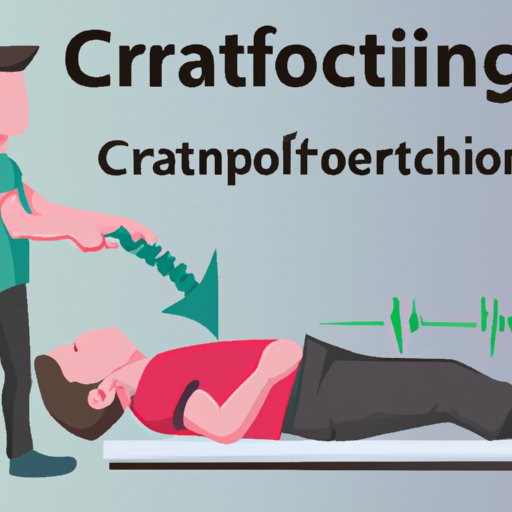
Introduction
Chiropractic treatment is a popular form of alternative medicine for pain management and overall wellness. However, if you’re undergoing chiropractic treatment, it’s important to know when to stop. In this article, we’ll explore the signs that indicate treatment may no longer be effective, how to make the decision to end care, and the pros and cons of long-term treatment.
Knowing When to Say Goodbye: Signs Your Chiropractic Treatment May Be Over
Recognizing the signs that your chiropractic treatment may be over is crucial. Continuing with treatment that is no longer effective can lead to frustration, wasted time, and even injury. Some indicators that chiropractic treatment may no longer be helping include:
1. Lack of Improvement in Symptoms
The purpose of chiropractic treatment is to alleviate pain and other symptoms. If you’re not seeing any improvement in your symptoms, it’s a sign that your treatment may need to be reevaluated.
2. Feeling Like the Treatment is No Longer Helping
Just as it’s important to consider visual improvements in symptoms, it’s also essential to consider how you feel. If you feel that the treatment is no longer beneficial or you’re not experiencing the intended benefits, it may be time to make a change.
3. The Chiropractor Recommends Reducing or Stopping Treatment
Your chiropractor may also suggest that you reduce or stop treatment if they believe it is no longer necessary. When your chiropractor recommends reducing or stopping treatment, it’s important to listen and discuss the reasons behind these suggestions.
The Art of Ending Chiropractic Treatment: Navigating This Tricky Decision
The decision to end chiropractic treatment can be emotionally challenging, especially if you’ve been seeing a chiropractor for an extended period. However, making this decision is essential for your health and wellbeing. Here are some tips for making the decision to end treatment:
1. Examining the Goals Defined During the Initial Treatment Plan
Before you began chiropractic treatment, you and your chiropractor likely discussed your goals for treatment. If those goals have been achieved, it may be time to consider ending treatment.
2. Comparing Progress to Those Goals
It’s also crucial to consider how far you’ve come since starting treatment. If you’ve made significant progress and are no longer experiencing the same symptoms, it’s a good sign that you may no longer need chiropractic care.
3. Considering the Impact of Ongoing Treatment on Daily Life
Chiropractic care can be time-consuming, costly, and disruptive to daily life. If continuing the treatment negatively impacts your daily routine or quality of life, it’s a sign that it may be time to end treatment.
Listening to Your Body: When It’s Time to Wrap Up Your Chiropractic Care
One of the most important things you can do when deciding to end chiropractic care is to pay attention to your body. Here are some tips for listening to your body:
1. Taking Note of How You Feel Before and After Treatment
Before and after each treatment session, take note of how you feel. If you’re not feeling any better, it’s a sign that the treatment may no longer be effective.
2. Paying Attention to Changes in Pain or Other Symptoms
Just as it’s essential to take note of how you feel after a treatment session, it’s also important to observe changes in pain or other symptoms. If you’re experiencing new or worsening symptoms, it may be time to make changes to your treatment plan.
3. Discussing Observations with the Chiropractor
Communication is key in chiropractic care. Discuss your observations and concerns with your chiropractor to ensure that your treatment plan meets your needs.
Deciding When to Stop Chiropractic Treatment: A Collaborative Approach with Your Practitioner
When deciding to end chiropractic treatment, it’s essential to work collaboratively with your chiropractor. Here are some tips for ensuring that the decision-making process is a team effort:
1. Gradually Reducing Visits Rather Than Stopping Suddenly
If you and your chiropractor agree that it’s time to end treatment, gradually reducing visits can help ease the transition. By tapering down treatment, you’ll ensure that your body has time to adjust to life without chiropractic care.
2. Transitioning to Less Frequent “Maintenance” Appointments
Once you’ve ended regular treatment, transitioning to less frequent “maintenance” appointments can help you maintain your progress. This option ensures that you’re still receiving care and monitoring your progress but without the time and financial commitments of regular treatment.
3. Referring Patients to Other Healthcare Providers If Necessary
If your chiropractor feels that you need more specialized care, they may refer you to other healthcare providers that can meet your needs.
The Pros and Cons of Long-Term Chiropractic Treatment: Knowing When to Finish Strong
Long-term chiropractic treatment can offer many benefits, including pain relief, improved mobility, and reduced stress. However, it’s essential to weigh these benefits against the potential downsides:
1. The Cost of Long-Term Treatment
Long-term chiropractic care can be costly, especially if it’s not covered by insurance. If ongoing treatment is not financially sustainable, it may be time to consider ending care.
2. Injuries Caused by Over-Reliance on Chiropractic Care
While chiropractic care is safe and effective, over-reliance on treatment can lead to injuries or complications. It’s essential to consider the risks of long-term treatment and make decisions based on your overall health and wellbeing.
3. The Need for a Collaborative Approach with Your Practitioner
Regular communication with your chiropractor is key to ensuring that your treatment plan is effective and meets your needs. By working together, you’ll have a better chance of achieving your goals and knowing when to end treatment.
Conclusion
Knowing when to stop chiropractic treatment is crucial for your health and wellbeing. By paying attention to your body and working collaboratively with your chiropractor, you can make informed decisions about your treatment plan. Remember, ending treatment doesn’t mean the end of your journey to wellness. It’s an opportunity to reassess your progress, make necessary changes, and begin anew.





